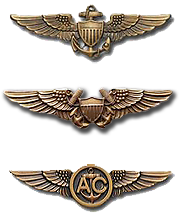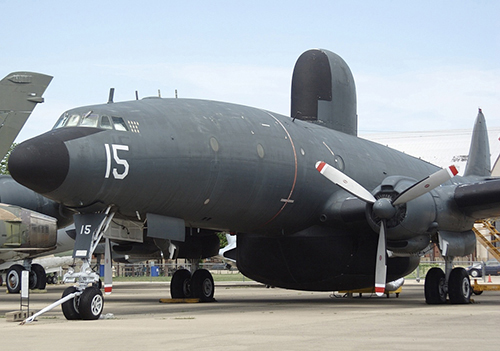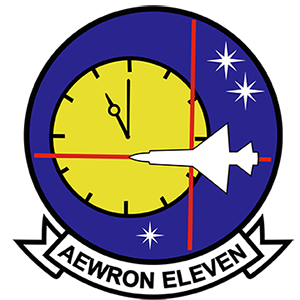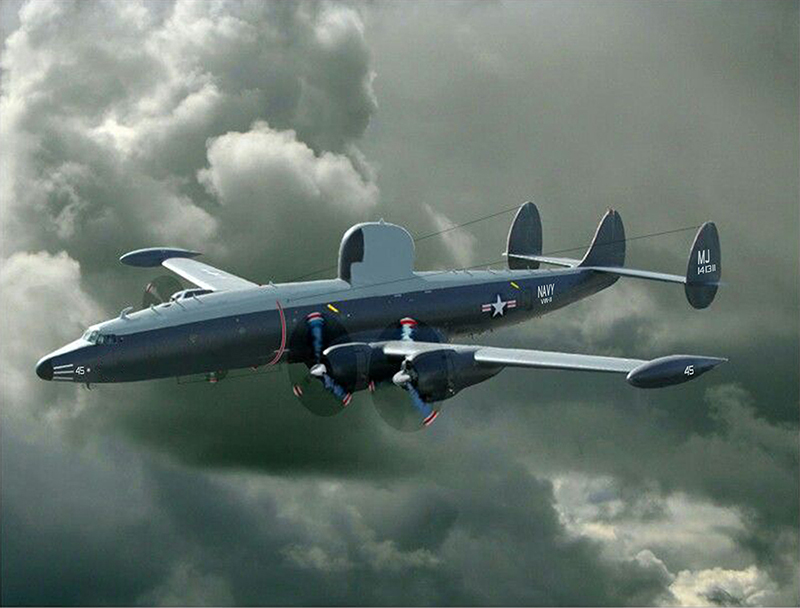A Career P-3 Pilot Remembers His First (non-VP) Tour-1960

Contributed by CAPT "Genie K" Graham (A Lifetime VP-45 Association Member)
I am a VP guy! And while I did three operational tours in VP, including a department head tour with the Pelicans and a command tour in JAX, my first flying tour, right out of flight training was in a VW squadron. Not the “hurricane hunters” VW but the “airborne early warning” VW. VW-11 to be exact. Our squadron tail letters were MIKE JULIETT.
When I reported aboard as a young LTJG, VW-11 was flying aircraft that the Navy designated WV-2s…better known as the Constellation or “Connie;” and they were permanently deployed out of Argentia, Newfoundland. The WV2 was a big aircraft carrying a crew of 22 and had a total of 11 bunks; so if you were not flying you could be catch up on some sack time. The galley area had a convection oven that was large enough to fit a turkey in. It was the only Navy plane I flew that had actually been designed with crew comfort in mind.
You had to have a minimum of 2000 hours pilot time and a green card to be qualified as PPC for an operational mission. This was 196 0, so almost all the PPCs were WW-II experienced pilots. When I arrived in June of that year, there were more 05s than there were 01s with a total of 165 officers. There were so many officers, I was the ninth Assistant Schedules Office.
0, so almost all the PPCs were WW-II experienced pilots. When I arrived in June of that year, there were more 05s than there were 01s with a total of 165 officers. There were so many officers, I was the ninth Assistant Schedules Office.
So what did VW-11 do? We flew the “Barrier Force” missions. We were flying the seaward extension of the Distant Early Warning or DEW line, 24 hours a day, seven days a week…a Connie took off out of Argentia every three hours and would head six hours towards the Azores, turn around and fly back to Newfoundland. This was serious Cold War stuff. The mission was to detect Russian bombers coming over the North Pole to attack the US. Every aircraft we detected that did not have an IFF code displayed was reported via Flash precedence traffic to NORAD. The Atlantic Fleet had a total of three VW squadrons with a total of 36 aircraft to meet this mission. There was only one squadron like us on the west coast, but it was huge (400+ officers) and based out of Barbers Point.
By its mere existence, the Atlantic Barrier served as a deterrent against hostile attack by eliminating the element of surprise from any potential aggressor’s plans of attack.
At some point, it was determined that we could cover the same mission with fewer airplanes (2 squadrons vice 3) and maintain the same detection probability by moving the operation further north. So, on 0001 July 1, 1961, Keflavik Air Force Base became Naval Air Station, Keflavik and that is where VW-11 deployed. Our rotation was two weeks in Kef and six weeks in Argentia. During the two weeks in Kef, you would fly eight or nine 12 hour missions before going home.
S o there I was….now a copilot on a crew with a PPC and three other pilots ((3P, 4P and 5P). Our crew was scheduled to spend the Christmas and New Year holidays in Kef and we were scheduled to fly December 23, taking off about 2330. During the brief we were told that a major front was scheduled to arrive in Kef around noon and we would probably be called home early so that we would be on the ground right before it arrived. We took off with a full fuel load (about 18 hours) and 300 feet up we entered the soup. Worse, we immediately starting picking up ice. With all the ant-icing boots operating, we climbed to altitude and started our racetrack pattern still in the clouds and occasionally in and out of light to moderate turbulence. Additionally, we had St Elmo’s fire dancing around on the windshield.
o there I was….now a copilot on a crew with a PPC and three other pilots ((3P, 4P and 5P). Our crew was scheduled to spend the Christmas and New Year holidays in Kef and we were scheduled to fly December 23, taking off about 2330. During the brief we were told that a major front was scheduled to arrive in Kef around noon and we would probably be called home early so that we would be on the ground right before it arrived. We took off with a full fuel load (about 18 hours) and 300 feet up we entered the soup. Worse, we immediately starting picking up ice. With all the ant-icing boots operating, we climbed to altitude and started our racetrack pattern still in the clouds and occasionally in and out of light to moderate turbulence. Additionally, we had St Elmo’s fire dancing around on the windshield.
As expected, we were radioed to return to Kef early. When we arrived overhead, we were told not to descend because the front had already arrived and it was snowing so hard they could not keep the runway clear. We asked for and received clearance to our alternate, which was Prestwick, Scotland. We turned southeast and descended to FL055 (5500ft). That probably seems low for a transit but with a full-bag of fuel, crew, a ton of heavy radar and other electronic equipment, and all the drag hanging out in the breeze, the WV-2 was limited to about FL095.
On this SE heading we were flying parallel with the front. The turbulence increased to moderate, St Elmo’s fire was building up so bad it was almost impossible to use the radios and the anti-icing was on continually. After ten minutes, the Navigator (the 3P) came running to the cockpit and said we had a head wind of 130 knots and our ground speed had accordingly dropped to 85 knots. At that ground speed, we did not have enough fuel to get us to the Shetland Islands, much less, Prestwick. The PPC ran back to the NAV table to recompute and confirm and the 3P got in the left seat.
When the 3P sat down next to me, I told him to call Iceland airways and get us a higher altitude. The turbulence had now increased to  severe and it was so bad he could not hold the mike to his mouth to get the request out. Frustration mounting, I reached to find my mike but when I looked back at the attitude indicator, we were rolling starboard thru 60 degrees. So I dropped my mike and went back to flying. Later, we finally had about fifeteen seconds where the turbulence wasn’t so bad and he was able to get the request for a higher altitude out before we were back in severe turbulence. Iceland airways came back with clearance to FL095. When we leveled out after the climb, the turbulence was still pretty bad but our ground speed had increased to 130knots. With that improvement we could make it Prestwick.
severe and it was so bad he could not hold the mike to his mouth to get the request out. Frustration mounting, I reached to find my mike but when I looked back at the attitude indicator, we were rolling starboard thru 60 degrees. So I dropped my mike and went back to flying. Later, we finally had about fifeteen seconds where the turbulence wasn’t so bad and he was able to get the request for a higher altitude out before we were back in severe turbulence. Iceland airways came back with clearance to FL095. When we leveled out after the climb, the turbulence was still pretty bad but our ground speed had increased to 130knots. With that improvement we could make it Prestwick.
We descended in the soup, broke out at about 1000ft over the field and landed with no further problems. Total time airborne was 12.4 hours and, as we were taxing in, I noted we had only 30 minutes fuel remaining. Whew!
After that flight, whenever anyone came up to me to describe a rough flight they had flown, and wanted to know if it was severe turbulence, my answer was always,” if it is severe, you won’t have to ask anyone, YOU WILL KNOW!”
Since we had landed further east, it was now Sunday, 1630 local time on Christmas Eve. The officers mess was closed, the enlisted dinning facility was closed and everything in town was closed. It was cold and dreary both outside and inside. The steam heat in the rooms was not working well, so we raided the gedunk machine and, finding extra covers, we went to sleep.
bout 2130 I was awakened for a phone call. Because Kef was still closed due of the storm, the squadron wanted us airborne at 0800 local time for a mission. After informing base ops of our takeoff time, we were told nothing would be opened at that hour, it being Christmas Day. We made arrangements for a 0500 wake up call and went back to sleep. The next morning the flight galley was able to come up with several dozen eggs, stale bread and cans of potatoes. With that we were back in air at 0800 local.
F irst things first. All 22 of us were ravenously hungry so we immediately started to cook-up eggs, potatoes and toast with the cabin heat increased so that we could thaw out. The mission back was operational but the front had moved further east so we flew most of the flight in the soup - but with only light turbulence. We had been the last plane to take off before the storm and were the first to land. We landed back in Kef after 12.7 flight time about 1830 local time on Christmas Day; dirty, still hungry and not in a very good mood. There was no transportation waiting so the PPC and I loudly chewed out the Duty Officer; so bad, I guess, that the CDO had to be called to get us under control.
irst things first. All 22 of us were ravenously hungry so we immediately started to cook-up eggs, potatoes and toast with the cabin heat increased so that we could thaw out. The mission back was operational but the front had moved further east so we flew most of the flight in the soup - but with only light turbulence. We had been the last plane to take off before the storm and were the first to land. We landed back in Kef after 12.7 flight time about 1830 local time on Christmas Day; dirty, still hungry and not in a very good mood. There was no transportation waiting so the PPC and I loudly chewed out the Duty Officer; so bad, I guess, that the CDO had to be called to get us under control.
Shortly after that another crew arrived and took all our classified material and crypto to turn in, they put our aircraft to bed and we were put in transportation and taken away, bitching the whole time. They took us to the enlisted dining facility where we were met by the all the chiefs and warrant officers of the EDF who had a full hot Christmas dinner waiting. They had heard about our crew and the last 36 hours and volunteered to wait for us. You never know when or where your next blessing will come from, just be thankful!
After a full meal, a hot shower, I went to bed and slept for 15 hours.
About the author of this Sea Story:
CAPT Gene Graham received his wings in February 1960. After the events in this story, he was ordered to VP-18. Later he was the Operations Officer in VP-45 in the early to mid-70’s, commanded VP-24 and finished his career as Executive Assistant and Senior Naval Aide to the Assistant Secretary of the Navy (Financial Management). He was also President of the VP-45 Association 2010-2012. He currently lives in Fairhope, Alabama with his wife Jerry.
WebMaster Note: The picture just above is actually a VW-4 (Hurricane Hunter) aircraft. But, it is such a beautiful image, I changed the markings to those of VW-11 for this article.
Send questions, comments or suggestions regarding this website to: vp45assoc@vp45association.org
Copyright © 2005 PATRON FOUR FIVE ASSOCIATION


